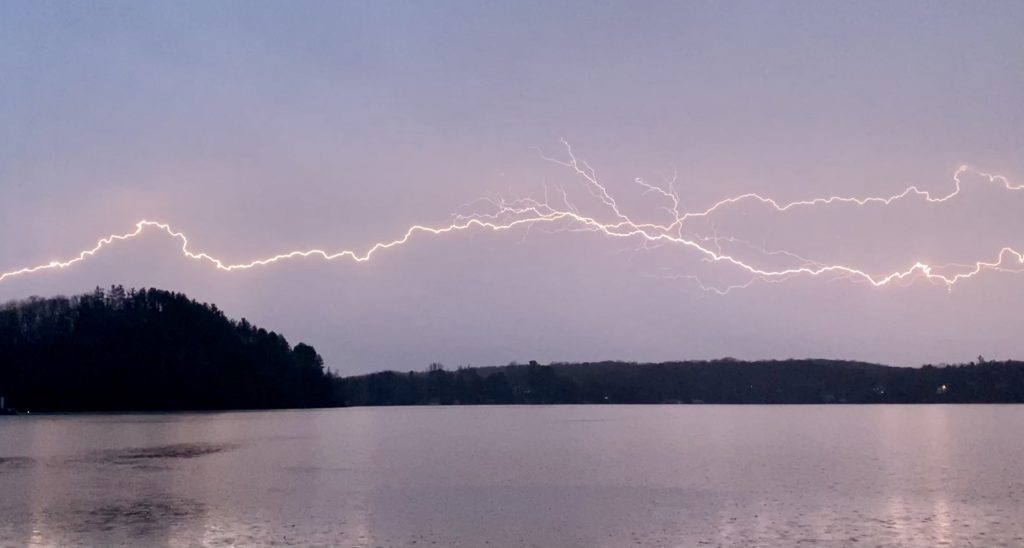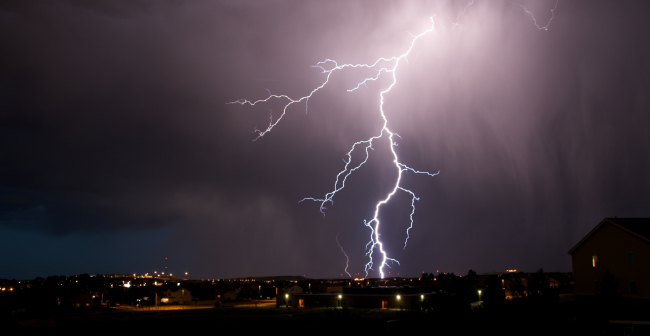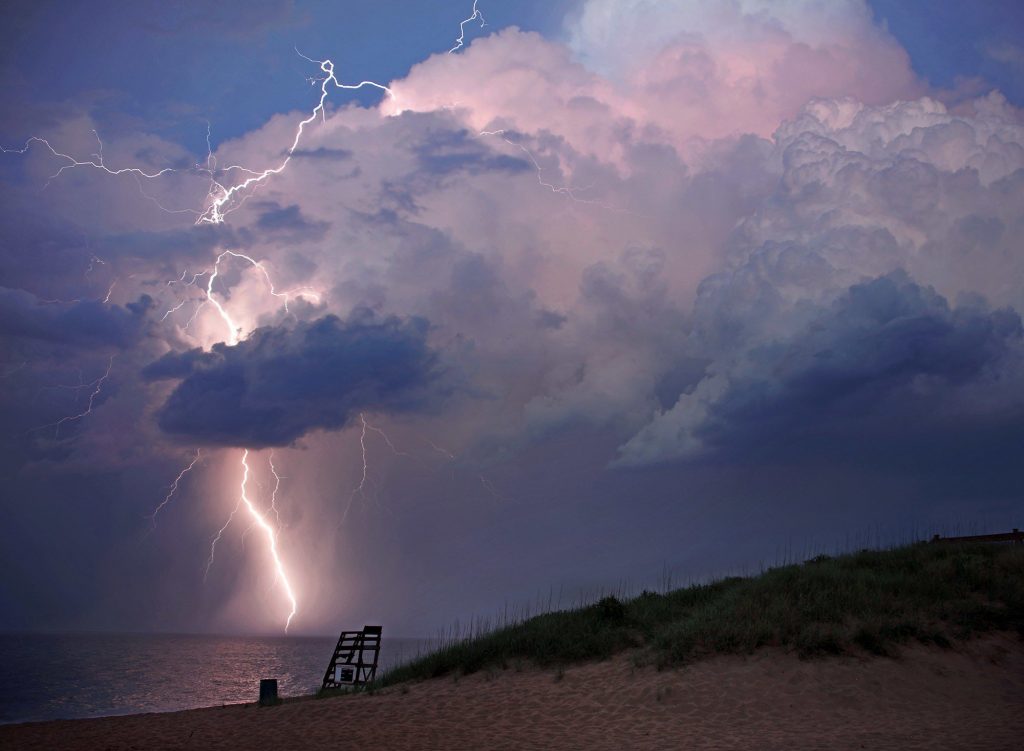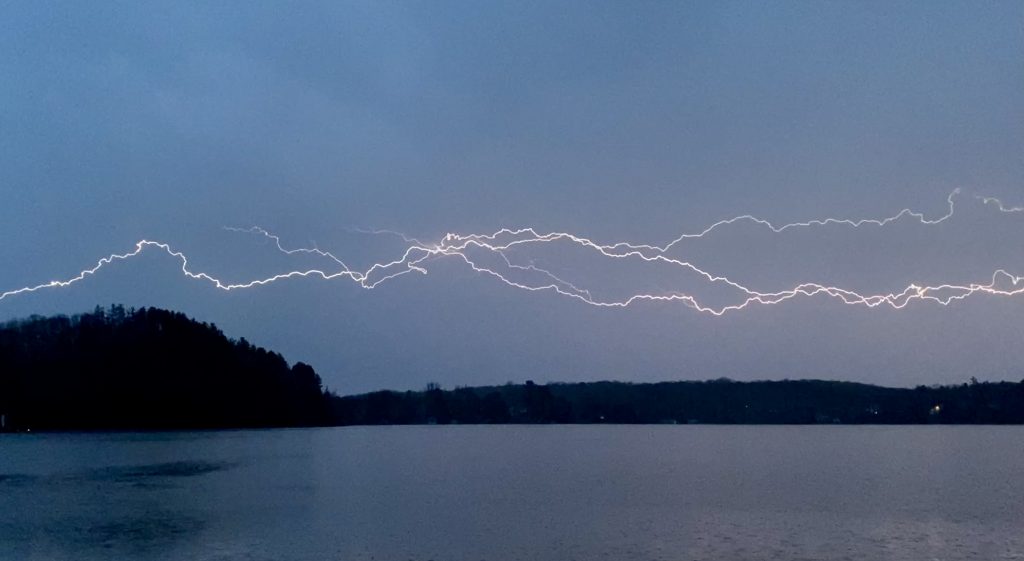I’ve been loving hobby photography lately, but I’d never thought to capture a lightning storm before. As a child I remember being told that lightning came up through the ground (which is only partially true), so I was surprised to check my pics and see the horizontal lightning bolts.

First: a short explanation of how lightning works, then I’ll explain what I learned about my horizontal lightning strikes!
Lightning is all about the charges – nature always wants to find equilibrium. It’s a natural static discharge where different areas of the atmosphere equalize in charge. Think of it like when you get a static shock from something – it’s the same process taking place.
The most common type of lightning is cloud-to-ground (CG). Generally CG is negatively charged. This channel of negative charge, called a stepped leader, is invisible to the human eye. When it approaches the ground, positively-charged “streamers” reach up to meet it – which explains the “lightning comes from the ground” misconception! These streamers tend to travel up through tall objects like trees, and when they reach the oppositely-charged leader electric current begins flowing – which is why you’re supposed to avoid standing near trees or tall objects during storms.

Occasionally, an exceptional amount of positive charge builds up in the upper levels of the cloud. This too must be balanced out, and since the lightning has a longer way to travel it is much more powerful. Usually these bolts travel vertically to the ground, but because of the high difference in electrical potential they can also travel horizontally before going to the ground. This means that these positive cloud-to-ground lightning bolts can strike from a blue sky many miles away from the storm – a “bolt from the blue.” Since positive lightning has higher peak currents and longer continuing currents, it is capable of heating surfaces to higher levels… which also makes it the type of lightning most likely to start a forest fire.

So anyway, onto our horizontal lightning strikes! The explanation for these bright horizontal strikes is actually pretty simple – differently-charged areas in the atmosphere are simply seeking equilibrium, this time it happens to be two clouds with opposing charges (cloud-to-cloud lightning). As we learned earlier, clouds can be either negatively or positively charged, and nature always seeks equilibrium.

